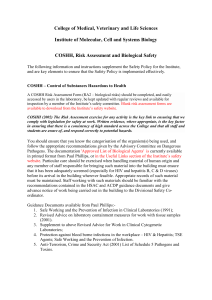SCHOOL OF PHYSICS AND ASTRONOMY COSHH ASSESSMENT FORM
advertisement
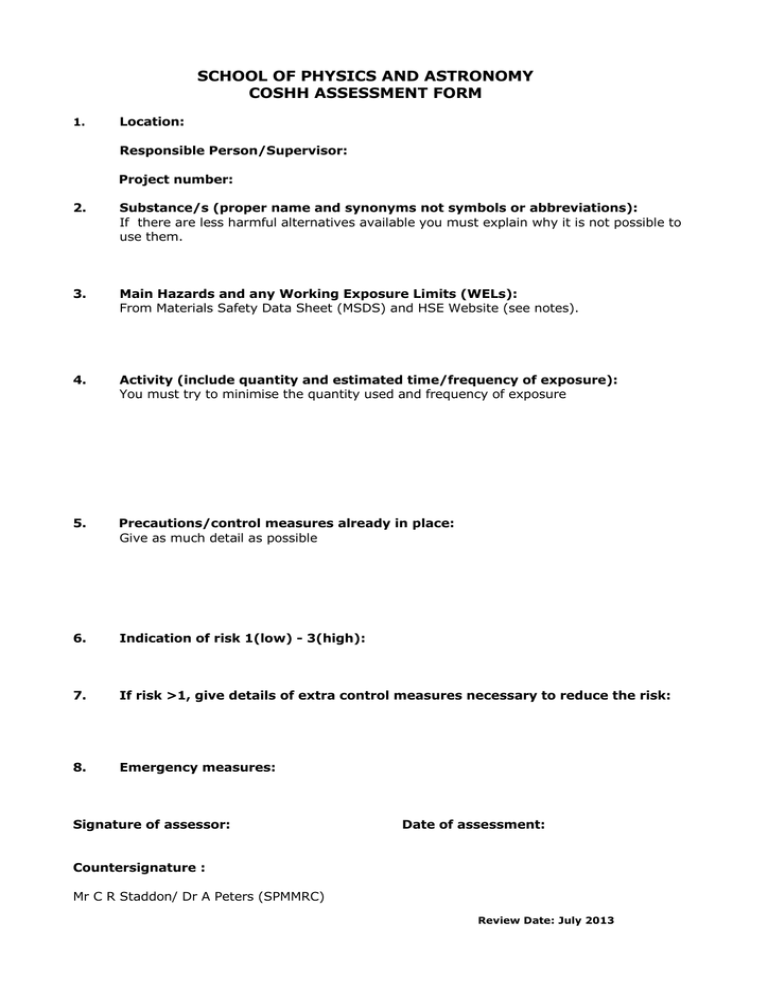
SCHOOL OF PHYSICS AND ASTRONOMY COSHH ASSESSMENT FORM 1. Location: Responsible Person/Supervisor: Project number: 2. Substance/s (proper name and synonyms not symbols or abbreviations): If there are less harmful alternatives available you must explain why it is not possible to use them. 3. Main Hazards and any Working Exposure Limits (WELs): From Materials Safety Data Sheet (MSDS) and HSE Website (see notes). 4. Activity (include quantity and estimated time/frequency of exposure): You must try to minimise the quantity used and frequency of exposure 5. Precautions/control measures already in place: Give as much detail as possible 6. Indication of risk 1(low) - 3(high): 7. If risk >1, give details of extra control measures necessary to reduce the risk: 8. Emergency measures: Signature of assessor: Date of assessment: Countersignature : Mr C R Staddon/ Dr A Peters (SPMMRC) Review Date: July 2013 Notes on completion of COSSH forms 1. Enter the location of use of the substance. Enter the name of the person responsible for the work i.e. academic supervisor or line manager and Project number (for UG lab) 2. Enter the chemical name(s) and any synonyms of the substance(s) being used. Also specify the nature of the material, i.e. pellets or powder, if relevant. COSHH legislation requires that you use less harmful alternatives or a less harmful form i.e. solid rather than fine powder where possible. Substances and activities presenting similar hazards and risks may be assessed generically. For example, in a particular laboratory various common solvents may be used in small quantities to clean samples. In this case it would be acceptable to make one assessment for all of the substances used. If, however, one of the solvents was being used in much larger quantities or in a different way, then a separate assessment is required for it. 3. The hazard presented by a substance is its potential to cause harm. List the primary hazards. This information is contained on the Materials Data Safety Sheet (MSDS) for the substance. A copy of the MSDS must be available for reference, either attached to the form or in a separate section of the risk assessment file. Hazards covered by COSHH are: Very toxic, toxic, corrosive, harmful or irritating. Carcinogenic, mutagenic or tetratogenic Respiratory or skin sensitizers Asphyxiants Also state if there are any working exposure limits (WELs). These are available from the Safety Office web site (www.nottingham.ac.uk/safety/publications/circulars/index.html#COSHH) and/or the HSE website (www.hse.gov.uk/coshh/index.htm#eh40) Note: physical hazards such as flammable, explosive or radioactive are NOT covered by COSHH but must be included in a general Risk Assessment on the appropriate school form 4. Briefly describe the way the substance is being used bearing in mind you must try to minimize the risk of exposure. Remember to include amount of substance and frequency of exposure 5. If any precautions/protective measures are required to limit the risk to an acceptable level record these here and note also any emergency procedures to be followed. It is essential that those persons carrying out the activity are made aware of these as part of their training. Note here whether monitoring and/or health surveillance are required. In certain cases the material is so hazardous that a detailed set of procedures will need to be specified, if so continue on a separate sheet if necessary. 6. The risk from the substance is the likelihood that it will cause harm in the actual circumstances of use. Grade the risk on a scale 1-3, where: 1 = low risk (event will seldom occur) 2 = medium risk (event will occasionally occur) 3 = high risk (event will frequently occur) The risk depends on: (i) the hazard presented by the substance, (ii) the method of its use/training of the operator, (iii) the quantity used and time of exposure, (iv) sensitivity of the person exposed and (v) the control measure in place listed under 5 above. Excessive exposure to a material which is not particularly hazardous can present a substantial risk. On the other hand, with the appropriate precautions, the risk of being harmed by a very hazardous material can be very small. 7. If risk >1 you must try to reduce it. Consider the importance of the work and whether any further measures to limit the risk are reasonably practicable. 8. Detail any emergency procedures to be carried out in case of spillage etc. 9. Do not forget to sign and date the form. The assessment is not valid if this is not done. Remember to review your assessments regularly. A counter signature by Mr C R Staddon or Dr A Peters (SPMMRC) is also required.
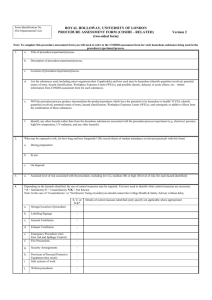

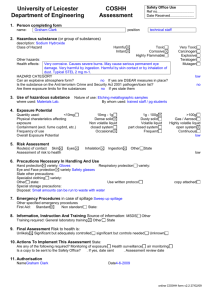
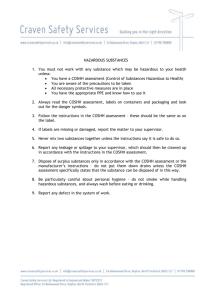
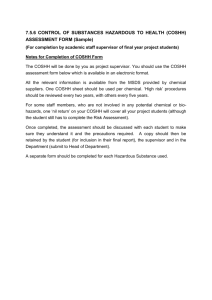
![Sussex risk assessment form - example [DOC 86.50KB]](http://s2.studylib.net/store/data/015070265_1-8e5fd8caccb524ab397e1c3d1d569cc7-300x300.png)

